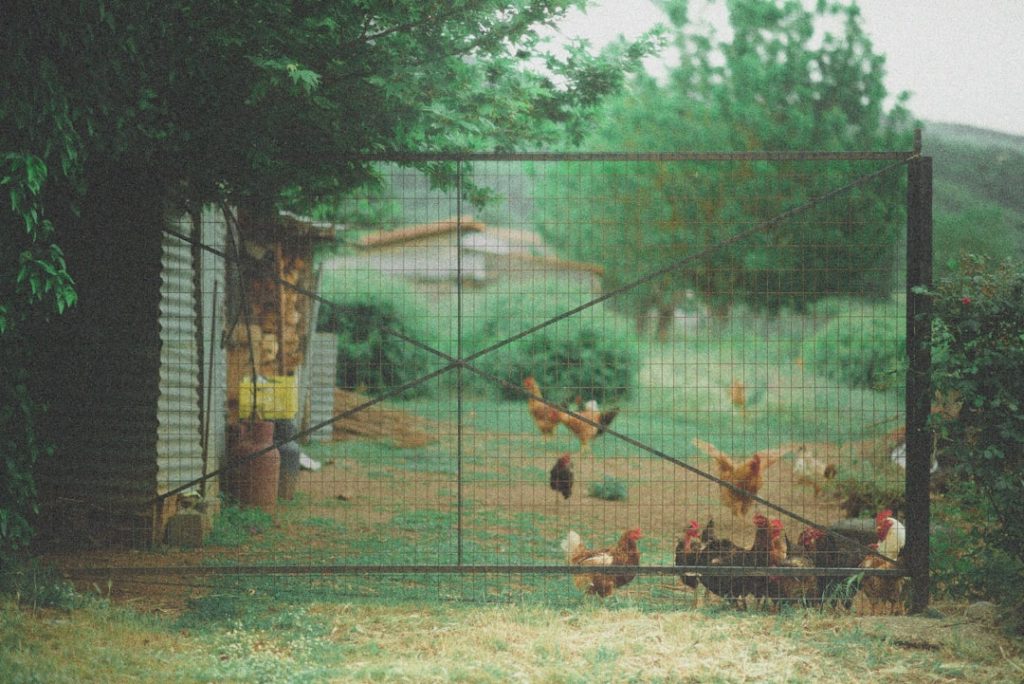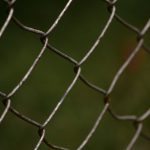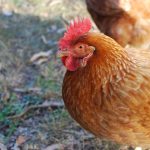Identifying potential predators is crucial for effective chicken protection. Common threats include foxes, raccoons, coyotes, weasels, hawks, and owls. Each predator exhibits distinct hunting behaviors and techniques, necessitating a thorough understanding of their habits to implement appropriate safeguards.
For instance, foxes are known for their cunning nature and burrowing abilities, while raccoons excel at climbing and can easily access poorly secured coops or runs. Understanding local predator populations is equally important. Areas with high coyote populations may require additional protective measures.
Conducting research on regional predators and consulting with local farmers or poultry experts can provide valuable insights into specific threats faced by chickens in a given area. By comprehensively assessing potential predators and their behaviors, chicken owners can develop and implement proactive strategies to ensure the safety and well-being of their flocks. This knowledge enables the creation of targeted protection measures that address the specific risks posed by local wildlife.
Table of Contents
- 1 Securing the coop and run
- 2 Using predator-proof fencing
- 3 Implementing proper lighting
- 4 Using guard animals
- 5 Removing attractants
- 6 Being vigilant and proactive
- 7 FAQs
- 7.1 What are common backyard chicken predators?
- 7.2 How can I keep my backyard chickens safe from predators?
- 7.3 What should I do if I suspect a predator is targeting my backyard chickens?
- 7.4 Are there any natural deterrents for backyard chicken predators?
- 7.5 What should I do if a predator attacks my backyard chickens?
Key Takeaways
- Understanding the behavior and habits of predators is crucial for protecting your flock.
- Securing the coop and run with sturdy materials and locks is essential to keep predators out.
- Using predator-proof fencing, such as hardware cloth, can help prevent predators from digging or climbing into the coop.
- Implementing proper lighting around the coop can deter nocturnal predators from approaching.
- Utilizing guard animals, such as dogs or llamas, can help protect the flock from potential threats.
- Removing attractants like food scraps and garbage can help reduce the risk of attracting predators to the coop area.
- Being vigilant and proactive in monitoring and addressing any potential threats is key to keeping the flock safe from predators.
Securing the coop and run
Inspecting for Gaps and Openings
Start by inspecting the coop and run for any gaps or openings that could allow predators to access the area. This includes checking for holes in the fencing, gaps in the walls, or any other potential entry points. It’s important to seal off these areas to prevent predators from gaining access to your chickens.
Securing Doors and Windows
In addition to securing the physical structure of the coop and run, it’s important to consider the security of the doors and windows. Make sure that all doors and windows are equipped with strong locks or latches to prevent predators from forcing their way inside.
Additional Security Measures
Consider installing predator-proof hardware cloth over windows and vents to further secure the coop and prevent entry by smaller predators such as raccoons or weasels. By taking these measures to secure the coop and run, you can create a safe and protected environment for your chickens.
Using predator-proof fencing
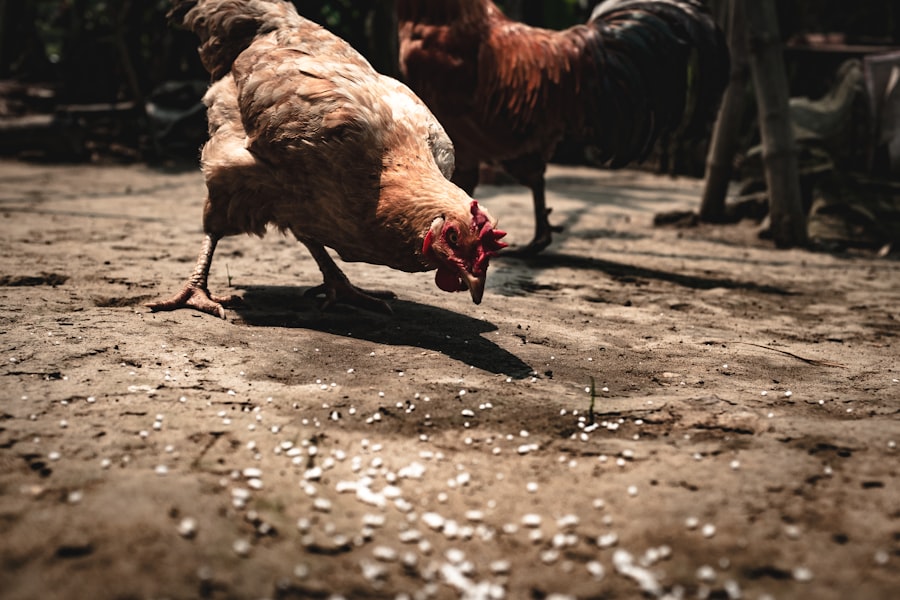
Using predator-proof fencing is an effective way to protect your chickens from potential threats. When selecting fencing for your coop and run, it’s important to choose materials that are strong and durable enough to withstand attempts by predators to break through or climb over. Hardware cloth is a popular choice for predator-proof fencing, as it is strong and resistant to chewing or digging by predators.
Additionally, burying the bottom of the fencing underground can prevent predators from digging underneath and gaining access to the coop or run. It’s also important to consider the height of the fencing when implementing predator-proof measures. Taller fencing can deter predators such as coyotes or foxes from attempting to climb over and access your chickens.
Adding a wire overhang or “chicken wire” along the top of the fence can further prevent predators from gaining access. By using predator-proof fencing, you can create a secure barrier around your coop and run, providing essential protection for your flock.
Implementing proper lighting
Implementing proper lighting around the coop and run can help deter nocturnal predators such as raccoons or owls. Predators are less likely to approach a well-lit area, as they prefer to remain hidden in darkness while hunting. Consider installing motion-activated lights around the perimeter of the coop and run to startle potential predators and discourage them from approaching.
Additionally, keeping the interior of the coop well-lit during nighttime hours can provide added protection for your chickens. In addition to deterring predators, proper lighting can also provide added security for your flock by allowing you to easily monitor their behavior and detect any potential threats. Consider installing security cameras with night vision capabilities to keep an eye on the coop and run during nighttime hours.
By implementing proper lighting around the coop and run, you can create a safer environment for your chickens and reduce the risk of predation.
Using guard animals
Using guard animals such as dogs or geese can provide an added layer of protection for your chickens. Dogs are natural predators to many of the animals that pose a threat to chickens, such as foxes or raccoons. By introducing a well-trained guard dog to your property, you can deter potential predators and provide added security for your flock.
Similarly, geese are known for their loud honking and aggressive behavior towards intruders, making them effective guard animals for deterring predators. When selecting a guard animal for your flock, it’s important to choose a breed that is well-suited for the task and has been properly trained to coexist with chickens. Introducing a guard animal at a young age and socializing them with your chickens can help ensure a harmonious relationship between the animals.
By using guard animals to protect your flock, you can provide an additional layer of security and peace of mind for both you and your chickens.
Removing attractants
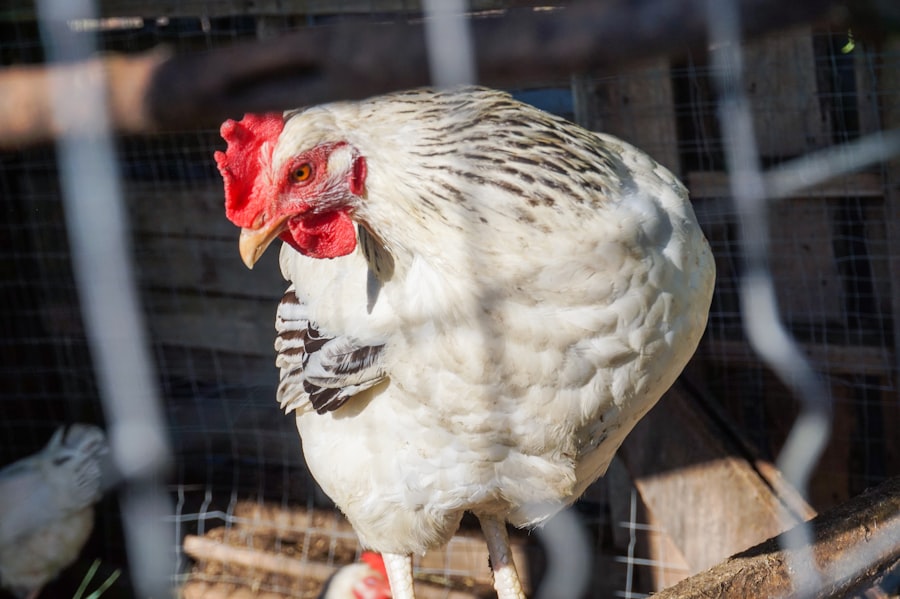
Secure Food Sources
Start by securing food sources such as chicken feed or garbage that may attract predators to your property. Store chicken feed in secure containers that are inaccessible to potential predators, and avoid leaving food scraps or garbage in areas where predators may be drawn to scavenge.
Remove Hiding Spots
Additionally, consider removing any potential hiding spots for predators, such as brush piles or overgrown vegetation near the coop and run. This will make it harder for predators to sneak up on your chickens.
Consider Other Animals on Your Property
It’s also important to consider the presence of other animals on your property that may attract predators. For example, if you have livestock such as goats or sheep, take measures to secure their enclosures and remove any potential attractants that may draw predators near your chickens.
By removing attractants from your property, you can reduce the likelihood of predation on your flock and create a safer environment for your chickens.
Being vigilant and proactive
Being vigilant and proactive in protecting your chickens is essential for ensuring their safety. This involves regularly inspecting the coop and run for any signs of damage or potential entry points for predators. Additionally, remain attentive to any changes in behavior or signs of distress in your chickens, as this may indicate the presence of a predator in the area.
By staying vigilant and proactive in monitoring your flock, you can quickly address any potential threats and take necessary measures to protect your chickens. In addition to regular inspections, consider implementing additional security measures such as installing alarms or motion-activated cameras around the coop and run. These tools can provide added protection for your flock by alerting you to any potential threats and deterring predators from approaching.
By being vigilant and proactive in protecting your chickens, you can create a secure environment for your flock and reduce the risk of predation. In conclusion, protecting your chickens from predators requires a combination of understanding the threats they face, securing their living environment, implementing deterrents, and remaining vigilant in monitoring their safety. By taking proactive measures such as using predator-proof fencing, proper lighting, guard animals, removing attractants, and staying vigilant, you can create a safe and secure environment for your flock.
With careful planning and attention to detail, you can effectively protect your chickens from potential threats and ensure their well-being.
If you’re looking for tips on how to keep backyard chickens safe from predators, you might also be interested in this article on choosing the right location for your chicken coop. Ensuring that your coop is in a secure and strategic location can help protect your chickens from potential threats.
FAQs
What are common backyard chicken predators?
Common backyard chicken predators include raccoons, foxes, coyotes, hawks, owls, snakes, and domestic dogs.
How can I keep my backyard chickens safe from predators?
To keep backyard chickens safe from predators, you can use secure fencing, predator-proof coops and runs, motion-activated lights or sound devices, and secure latches on coop doors.
What should I do if I suspect a predator is targeting my backyard chickens?
If you suspect a predator is targeting your backyard chickens, it’s important to take immediate action to secure the coop and run, and consider setting up traps or deterrents to keep the predator away.
Are there any natural deterrents for backyard chicken predators?
Some natural deterrents for backyard chicken predators include using strong-smelling herbs and plants around the coop, such as lavender, mint, and marigolds, as well as keeping a guard animal like a dog or a rooster to protect the flock.
What should I do if a predator attacks my backyard chickens?
If a predator attacks your backyard chickens, it’s important to assess the situation and provide immediate medical attention to any injured birds. You should also reinforce the coop and run to prevent future attacks.
Meet Walter, the feathered-friend fanatic of Florida! Nestled in the sunshine state, Walter struts through life with his feathered companions, clucking his way to happiness. With a coop that’s fancier than a five-star hotel, he’s the Don Juan of the chicken world. When he’s not teaching his hens to do the cha-cha, you’ll find him in a heated debate with his prized rooster, Sir Clucks-a-Lot. Walter’s poultry passion is no yolk; he’s the sunny-side-up guy you never knew you needed in your flock of friends!

